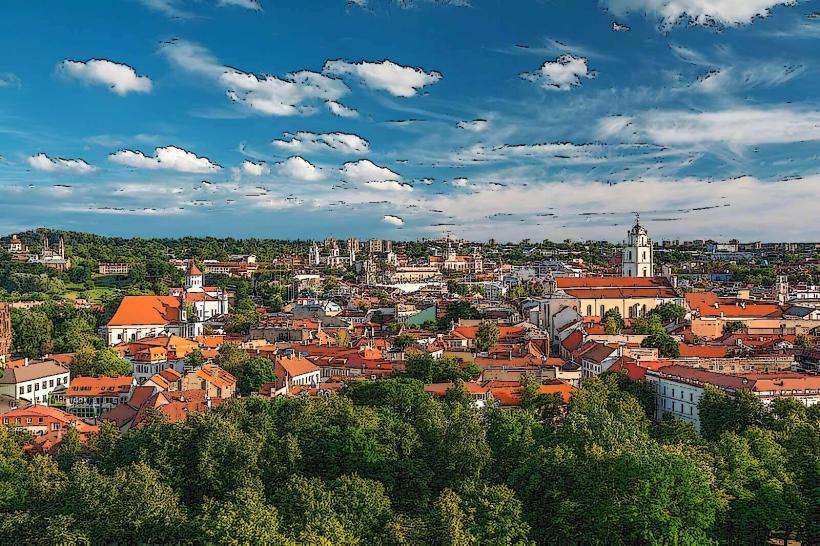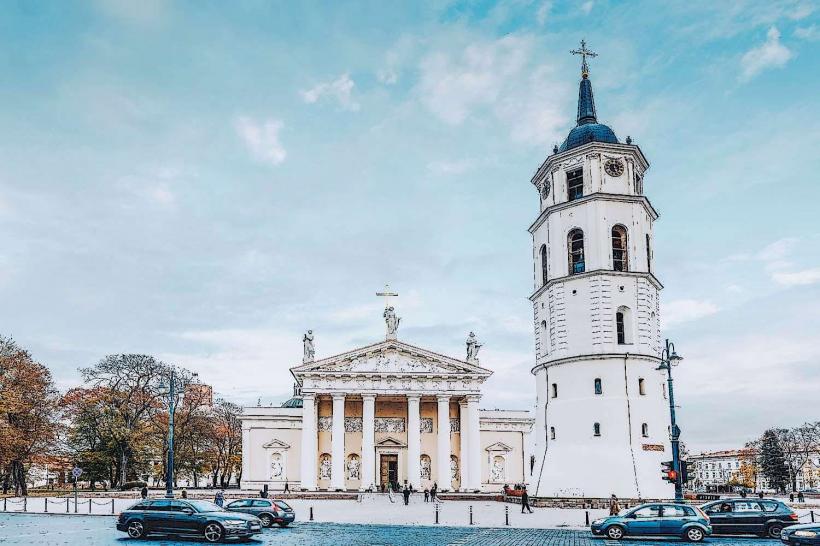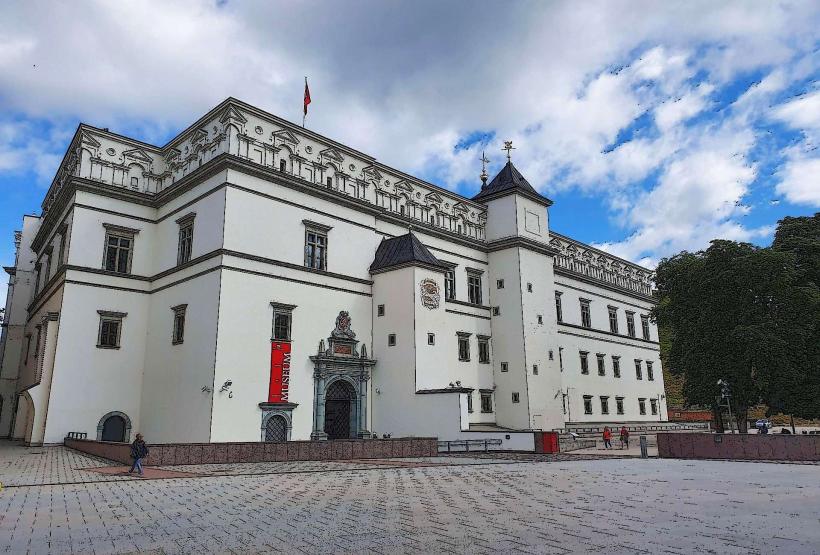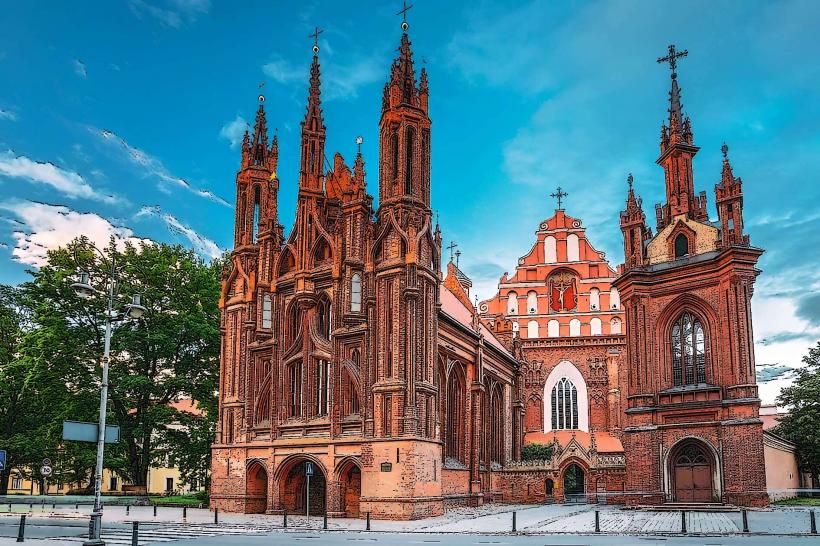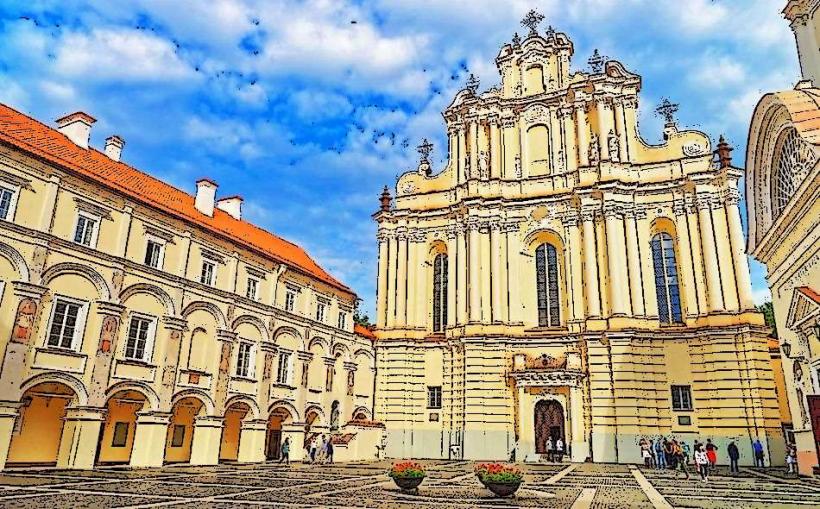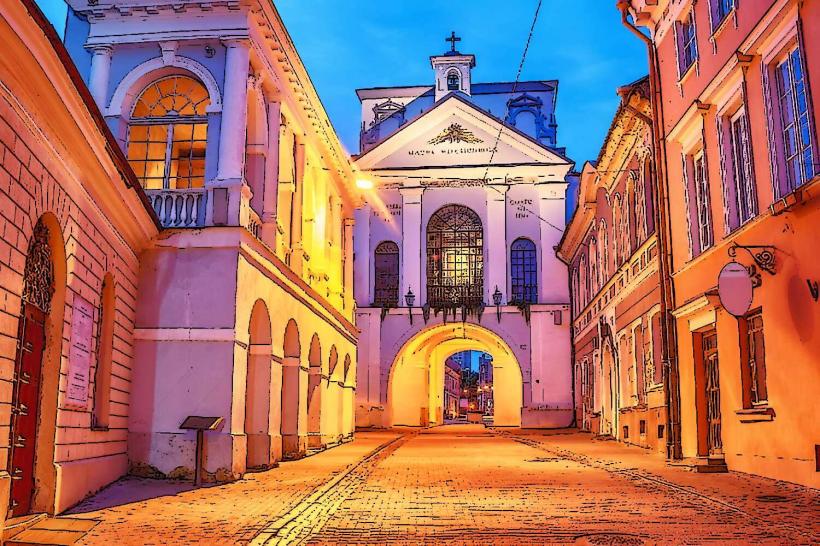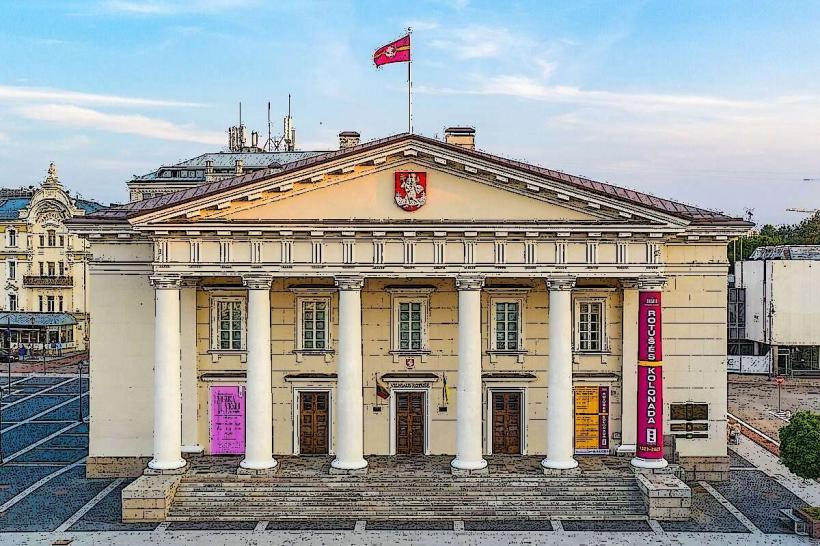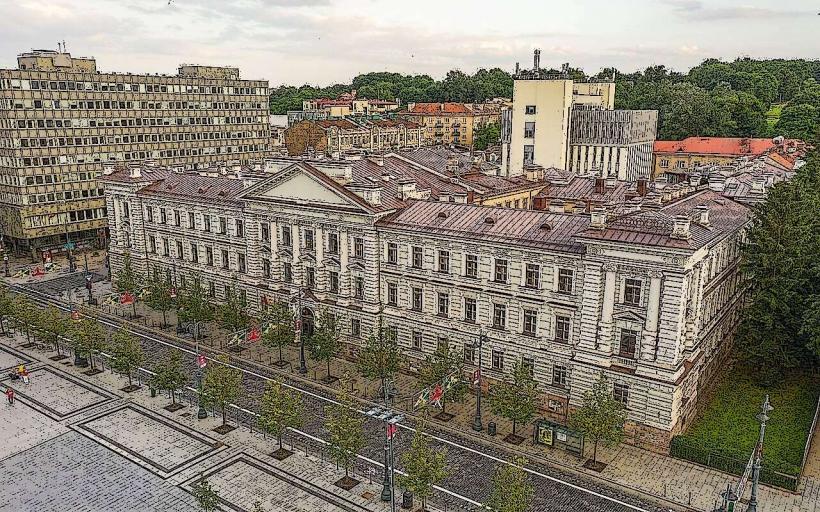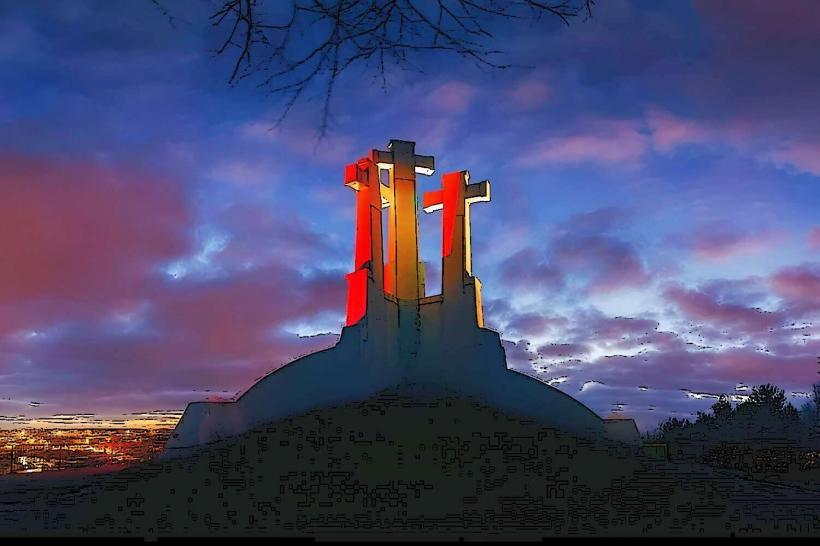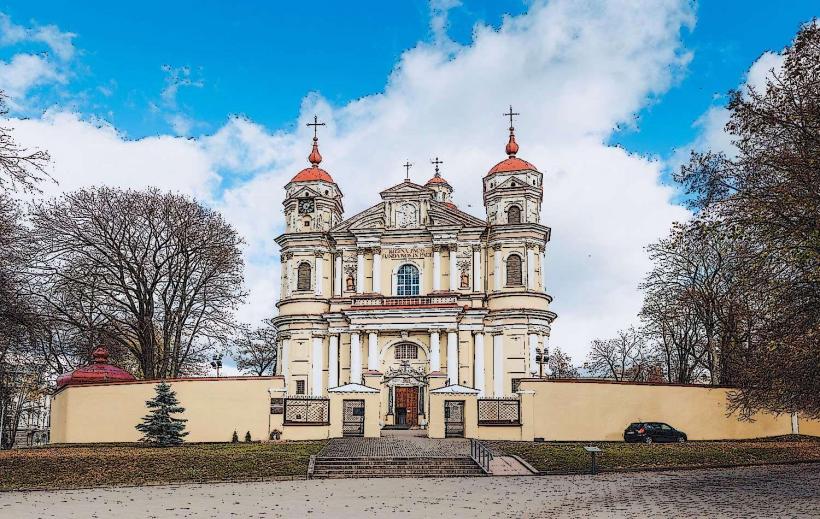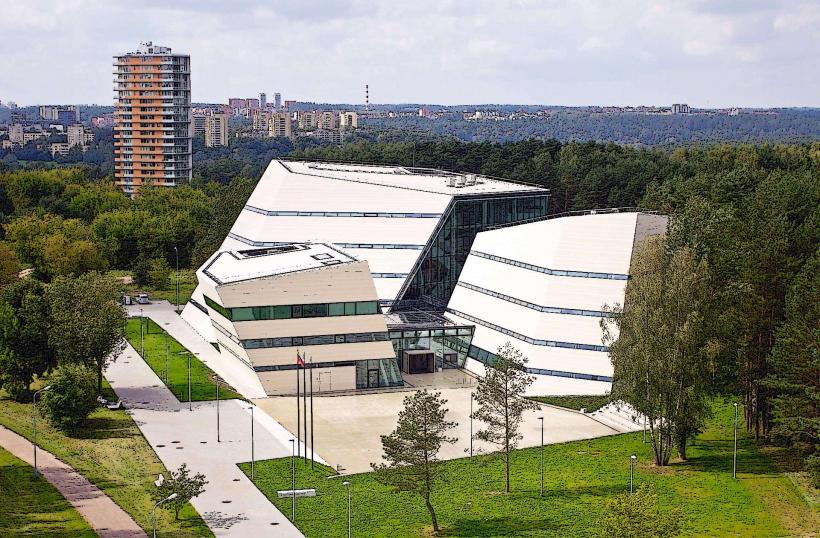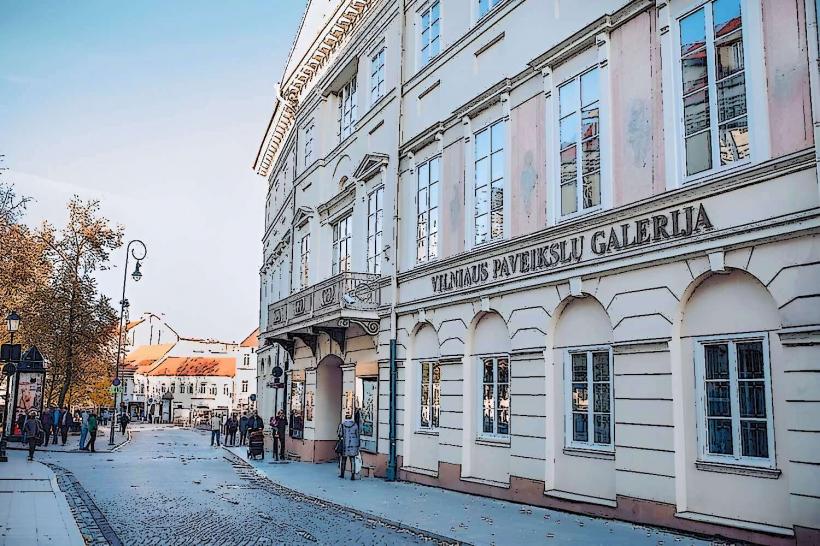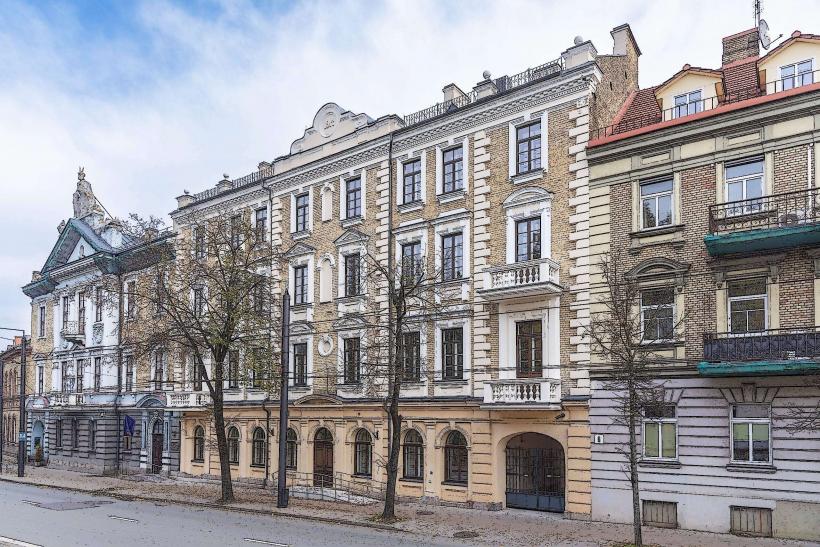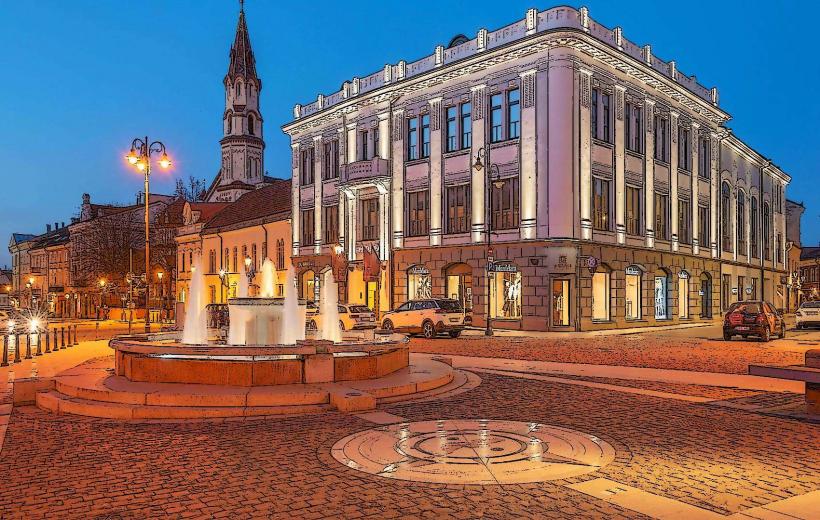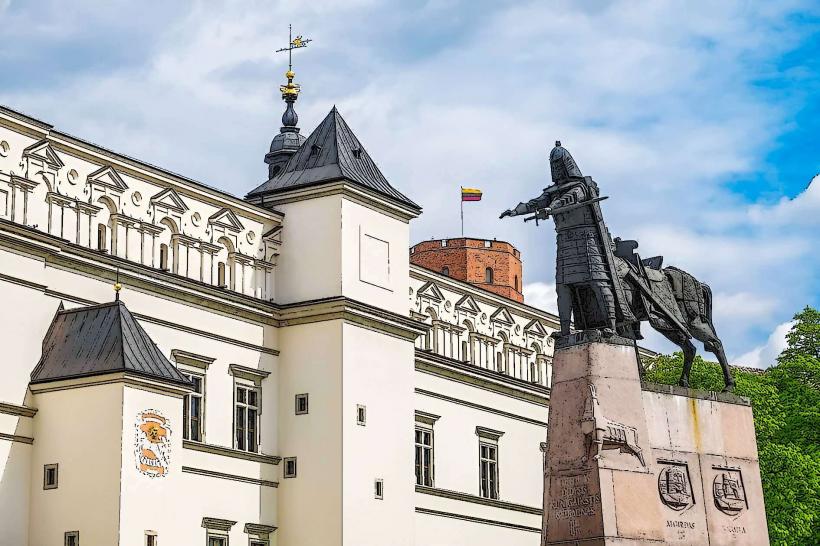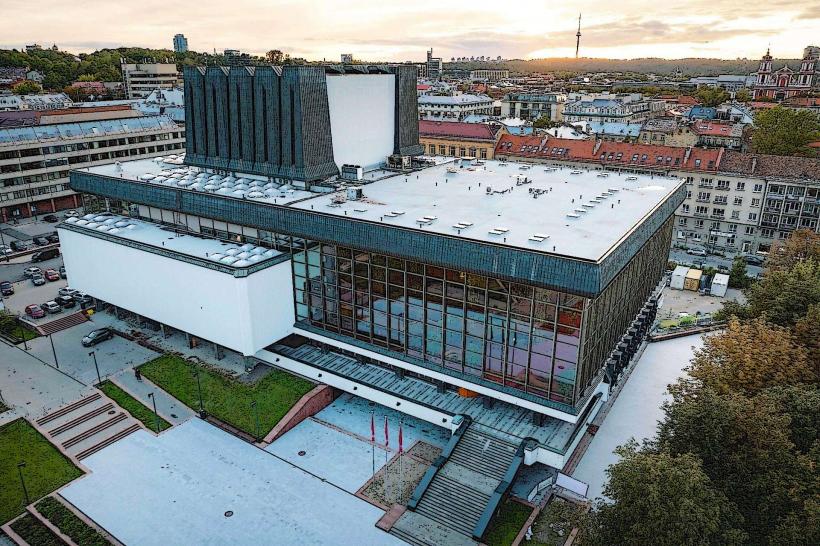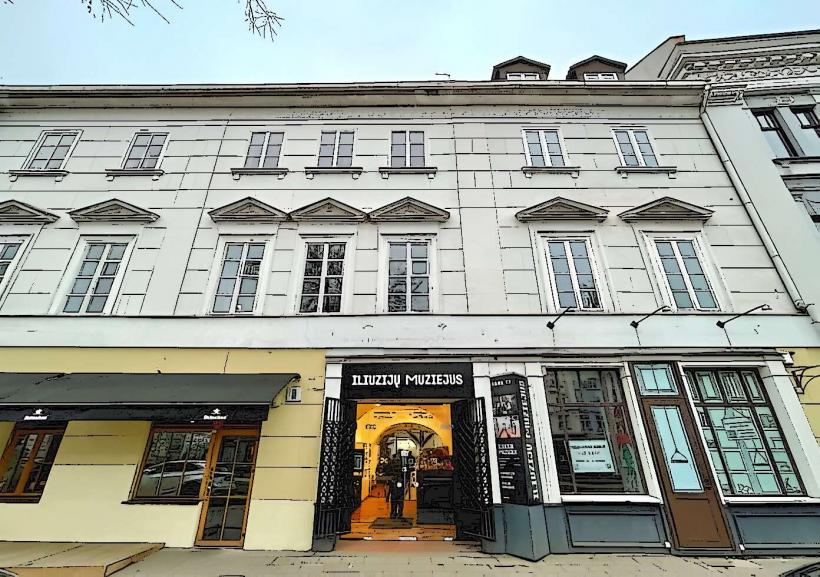Information
Landmark: Church of St. CasimirCity: Vilnius
Country: Lithuania
Continent: Europe
Church of St. Casimir (Šv. Kazimiero bažnyčia)
The Church of St. Casimir (Lithuanian: Šv. Kazimiero bažnyčia) is one of the most significant and iconic churches in Vilnius, Lithuania. Located in the heart of the city's Old Town, this church is a key example of Baroque architecture and has an important place in the religious and cultural history of Lithuania. Dedicated to St. Casimir, the patron saint of Lithuania, the church holds both religious and national significance.
History of the Church
Foundation and Construction: The Church of St. Casimir was built between 1604 and 1618 as a Jesuit church. The Jesuits, a Catholic religious order, were instrumental in spreading Catholicism and establishing educational institutions across the region during the Counter-Reformation period. The church was originally part of the Jesuit College in Vilnius.
Patron Saint: The church is dedicated to St. Casimir (Lithuanian: Šv. Kazimieras), the patron saint of Lithuania. St. Casimir was a Lithuanian prince in the 15th century who was known for his deep piety, humility, and efforts to strengthen Christianity in the region. He was canonized as a saint by the Catholic Church in 1604, which coincided with the church's construction.
Architectural Style: The church is an outstanding example of Baroque architecture, which was prevalent in Europe during the 17th century. The Baroque style is characterized by its dramatic use of space, ornate decoration, and grandiose interiors. The church was designed by the architect Giovanni Maria Bernardoni, who blended traditional Italian Baroque influences with local Lithuanian elements. The church's interior is particularly noted for its elaborate frescoes, stucco work, and the use of light and space to create a sense of divine grandeur.
Architectural Features
Exterior: The exterior of the Church of St. Casimir is Baroque, with a grand facade featuring twin towers and a central entrance. The facade is adorned with intricate detailing, including decorative pilasters, columns, and niches. The design creates an imposing presence, while the use of curves and symmetry enhances the Baroque aesthetic.
Interior: The interior of the church is known for its stunning Baroque decoration. Highlights include:
- Altars: The high altar is dedicated to St. Casimir, and it is framed by elaborate carved woodwork and gold leaf, typical of the Baroque period. Other side altars also feature intricate design and contribute to the rich atmosphere of the church.
- Frescoes and Paintings: The walls and ceilings are decorated with frescoes that depict scenes from the life of St. Casimir, as well as various biblical stories. These works of art enhance the spiritual and artistic impact of the space.
- Stucco Work: The church features stucco decorations that reflect the Baroque style’s emphasis on ornate, sculptural details. The use of light in the interior, particularly through the large windows, creates a serene atmosphere that adds to the spiritual ambiance of the space.
Chapels: The church contains several chapels dedicated to different saints and aspects of Catholic faith, each with its own architectural style and iconography. These chapels are adorned with rich baroque sculptures, paintings, and religious symbols.
Cultural and Religious Significance
Symbol of Lithuanian Identity: The Church of St. Casimir is an important symbol of Lithuanian Catholicism and national identity. St. Casimir is a beloved figure in Lithuania, and the church’s dedication to him reflects the strong religious traditions in the country. The church is a reminder of the time when Lithuania was part of the Polish-Lithuanian Commonwealth and its role as a center for Catholic faith and culture in Eastern Europe.
Jesuit Influence: As a former Jesuit church, the Church of St. Casimir played an important role in the education and religious life of Vilnius. The Jesuit order was responsible for establishing many educational institutions in the region, and the church served as a spiritual center for both the local population and students of the Jesuit College.
Pilgrimage Site: The church is a popular pilgrimage site for Catholics in Lithuania. It is particularly significant during religious holidays such as St. Casimir's Day (celebrated on March 4th), when thousands of people gather to honor the patron saint of Lithuania.
Modern Role
Active Place of Worship: Today, the Church of St. Casimir remains an active place of worship, holding regular Masses and religious ceremonies. It continues to serve as a spiritual center for the local Catholic community and is open to visitors who wish to experience its religious and historical significance.
Cultural and Artistic Venue: In addition to its religious functions, the church is also used for cultural events such as classical music concerts and art exhibitions. The church’s excellent acoustics and its rich historical atmosphere make it an ideal venue for such performances.
Visitor Experience
Accessibility: The Church of St. Casimir is located in the Vilnius Old Town, making it easy to visit as part of a walking tour of the city’s historic sites. It is situated near other significant landmarks such as St. Anne's Church, Vilnius University, and the Gates of Dawn.
Guided Tours: Visitors can take guided tours of the church to learn about its history, architecture, and the life of St. Casimir. The tours often focus on the Baroque artistic elements, the history of the Jesuit order, and the church’s role in the development of Catholicism in Lithuania.
Peaceful Atmosphere: The church’s serene atmosphere makes it a peaceful place for reflection and prayer. The ornate decorations, combined with the spiritual ambiance, create an environment that encourages visitors to connect with both the religious heritage and the artistic beauty of Lithuania.
Conclusion
The Church of St. Casimir is one of Vilnius’ most remarkable churches, offering a blend of religious significance, historical importance, and architectural beauty. As a Baroque masterpiece, it is a testament to the grandeur and artistic achievement of the Jesuit order and the deep Catholic traditions of Lithuania. Whether for its spiritual role in the community or its architectural splendor, the church is a must-visit for anyone interested in Lithuanian history, religious heritage, and Baroque art.

